Unveiling the Secrets of Mount Hengshan: A Cultural and Historical Adventure

An Essential Guide to Visiting Mount Hengshan
In This Guide
- An Essential Guide to Visiting Mount Hengshan
- The Rich History and Legends of Mount Hengshan
- Main Highlights: What You Absolutely Can’t Miss
- Planning Your Visit: A Practical Guide
- Tickets: Prices, Booking, and Tips
- How to Get There: A Complete Transportation Guide
- Local Cuisine and Accommodation Nearby
- Frequently Asked Questions
- Final Thoughts on Your Trip
Mount Hengshan, one of China’s five sacred mountains, is a majestic destination that beckons travelers with its towering peaks, rich history, and spiritual significance. Nestled in the Nanyue District of Hengyang, this mountain offers not only breathtaking natural beauty but also a deep connection to Chinese culture and religion. As you traverse its scenic trails, you will encounter ancient temples, serene landscapes, and a vibrant tapestry of local traditions that have flourished for centuries.
A Journey into History and Spirituality
Hengshan, known in Chinese as 恒山 (Héng Shān), has been revered since antiquity. It has served as a pilgrimage site for Taoists and Buddhists alike, who come to pay homage at its sacred temples and seek enlightenment among its tranquil surroundings. The peak, Zhurong (祝融), stands as a symbol of fire and passion, embodying the spirit of resilience that has defined the Chinese people through the ages. Visitors can explore the Grand Temple of Hengshan, a stunning architectural marvel that showcases the artistic prowess of ancient craftsmen, or climb to the summit where the air is thick with the scent of incense and the sounds of prayer.
Planning Your Visit
To make the most of your adventure at Mount Hengshan, consider the following tips:

Mount Hengshan.
-
Getting There: The most convenient way to reach Mount Hengshan is by taking a high-speed train to Hengshan West Station. From there, local buses provide a seamless connection to Nanyue Town, where your mountain exploration begins.
-
Choosing Your Route: There are various options for ascending the mountain, catering to different fitness levels:
- Option 1: Take a bus to the midway point and then a cable car to near the summit.
- Option 2: Hike from the base to the midway point, then take the cable car to the upper reaches.
- Option 3: Take the bus up to the midway point, and hike the remaining distance to Zhurong Peak.
-
Option 4: For the most adventurous, hike the entire way from the base to the peak.
-
Timing Your Trek: Be mindful of your schedule—most visitors recommend starting your hike early in the day to avoid the crowds and ensure you have ample time to return safely before dusk.
-
Weather Considerations: The weather can change rapidly in the mountains. Dress in layers and carry a light rain jacket, especially if rain is forecasted.
-
Respect Local Customs: As you explore the temples and interact with local worshippers, maintain a respectful demeanor. Photography may be restricted in some sacred areas, so be sure to ask before snapping photos.
Conclusion
Visiting Mount Hengshan is more than just a hike; it’s an exploration of the heart and soul of Chinese culture. Whether you are drawn by the spiritual ambiance, the historical significance, or the natural beauty, this sacred mountain promises an unforgettable experience that resonates long after you return home. Prepare to be inspired as you ascend to the heights of one of China’s most revered landscapes.
The Rich History and Legends of Mount Hengshan
Mount Hengshan, known in Chinese as 恒山 (Héngshān), stands as one of the Five Great Mountains of China and is renowned not only for its breathtaking landscapes but also for its rich tapestry of history and legends. This ancient mountain has been a site of spiritual significance, artistic inspiration, and cultural heritage for centuries, drawing visitors from all corners of the globe.
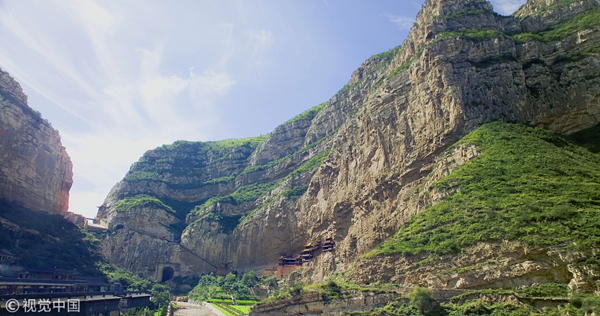
Mount Hengshan.
Historical Significance
Mount Hengshan has long been revered as a sacred site in Taoism, Buddhism, and Confucianism. Its history dates back over 2,000 years, with its first recorded mention appearing in the Han Dynasty (206 BCE – 220 CE). The mountain is often associated with the legendary figure of Zhurong, the god of fire in Chinese mythology, who is believed to have resided atop its highest peak, Zhurong Peak (祝融峰).
Throughout the dynasties, the mountain served as a sanctuary for scholars and monks, fostering a rich intellectual and spiritual tradition. The Grand Temple of Hengshan (南岳大庙), located at the base, is one of the largest and most important Taoist temples in China, embodying the mountain’s deep religious roots. Built during the Tang Dynasty (618–907 CE) and expanded in subsequent dynasties, the temple is an architectural marvel adorned with intricate carvings and vibrant paintings, attracting pilgrims and tourists alike.
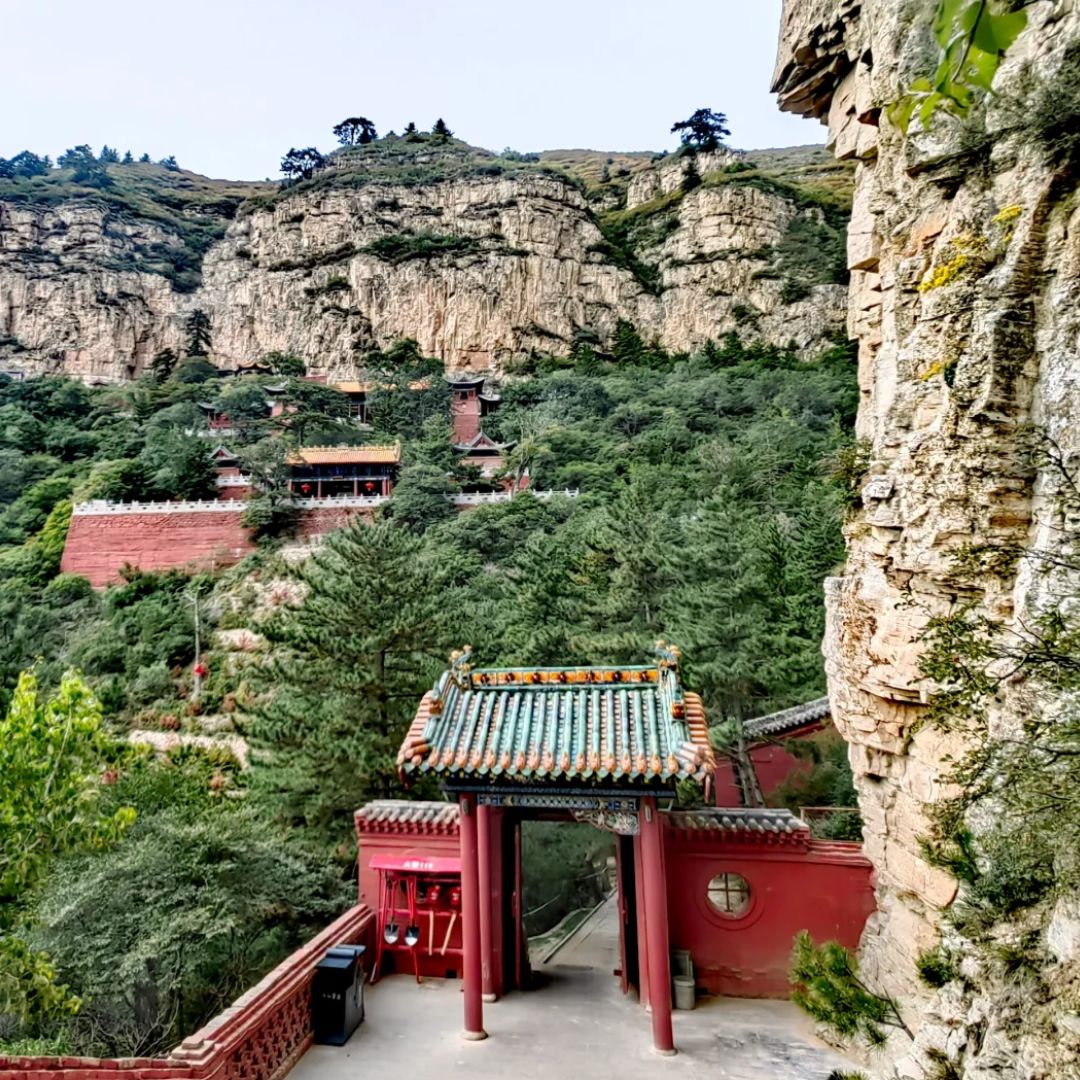
Mount Hengshan.
Legendary Tales
The legends surrounding Mount Hengshan are as captivating as its landscapes. One of the most famous tales involves the Eight Immortals (八仙), a group of legendary figures in Chinese folklore. It is said that they traversed the mountain during their quests for enlightenment. Each Immortal is associated with unique powers and attributes, and their adventures have become integral to the cultural fabric of the region.
Another popular legend tells of the Dragon King, a deity believed to control water and weather. According to local lore, he once transformed into a beautiful maiden and descended the mountain, enchanting those who crossed her path. This tale is often recounted by locals and serves as a reminder of the mountain’s mystical qualities.
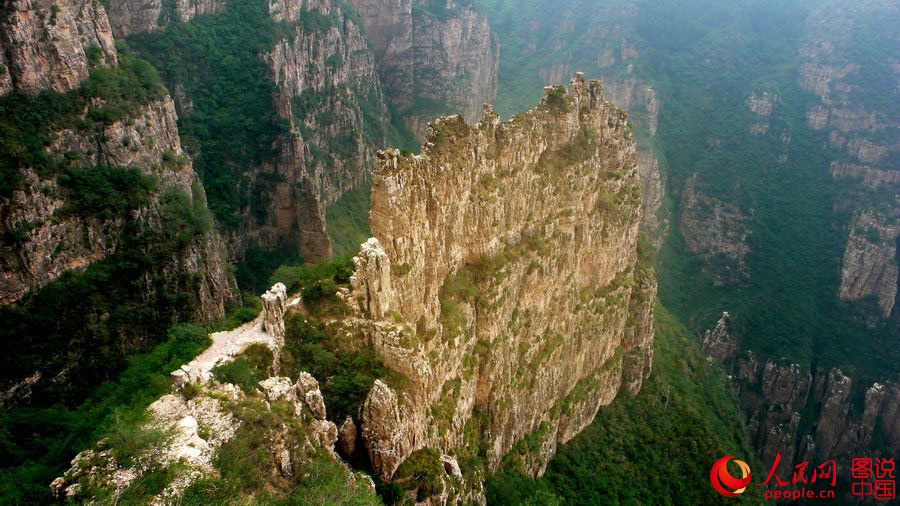
Mount Hengshan.
Cultural Heritage
Mount Hengshan has inspired countless poets, painters, and philosophers throughout Chinese history. The stunning vistas, steep cliffs, and serene temples provide a backdrop that has been celebrated in classical Chinese poetry. The mountain’s natural beauty and spiritual ambiance are often depicted in traditional paintings, showcasing the harmonious relationship between humanity and nature.
In addition to its artistic significance, Mount Hengshan is recognized as a UNESCO Global Geopark, highlighting its geological importance. The unique rock formations and diverse ecosystems found here attract researchers and nature enthusiasts, further enriching the mountain’s cultural legacy.

Mount Hengshan.
Conclusion
Visiting Mount Hengshan is not just an opportunity to experience its stunning natural beauty; it is a journey through the annals of Chinese history and mythology. As you hike its trails or explore its temples, you will find yourself immersed in the legends and stories that have shaped this sacred mountain for millennia. Whether you come for spiritual reflection, adventure, or to appreciate its artistic heritage, Mount Hengshan promises an unforgettable experience that resonates with the heart of Chinese culture.
Main Highlights: What You Absolutely Can’t Miss
Discovering Mount Hengshan: Unmissable Highlights
Mount Hengshan, known as Nanyue (南岳), is not just a stunning natural wonder; it is also steeped in rich history and cultural significance. As one of China’s Five Great Mountains, it offers a harmonious blend of breathtaking landscapes, ancient temples, and spiritual sites. Here are the key highlights that you absolutely cannot miss during your visit.
1. Zhurong Peak (祝融峰)
As the highest point of Mount Hengshan, Zhurong Peak towers at 1,300 meters above sea level. The hike to the peak can be tailored to your preferences, whether you choose to take a bus to a midway point before hiking the final stretch or opt for the full hiking experience from the base. At the summit, you’ll find a Taoist temple where pilgrims offer incense and prayers, making it a serene spot to reflect on the beauty and spirituality of the mountain.

Mount Hengshan.
2. The Grand Temple of Hengshan (南岳大庙)
Located at the foot of the mountain, the Grand Temple is a magnificent structure that embodies the essence of Chinese architecture and religious devotion. This temple complex dates back to the Tang Dynasty and is dedicated to the worship of various deities, including the patron of Mount Hengshan, Zhurong. The intricate carvings, vibrant murals, and peaceful courtyards make it a must-visit for anyone interested in Chinese culture and religion.
3. Nanyue Scenic Area
The Nanyue Scenic Area encompasses a variety of natural landscapes, including lush forests and rugged cliffs. This area is perfect for leisurely strolls or more adventurous hikes. Don’t miss the chance to explore Zhuling Cave (祝陵洞), a mystical site steeped in legend, or take in the views from the observation deck at Wanshou Big Tripod (万寿鼎).
4. Hiking Trails and Scenic Routes
Mount Hengshan offers several hiking options that cater to all levels of fitness. For the avid hiker, consider trekking from the base to Zhurong Peak. This scenic route allows you to immerse yourself in the natural beauty of the mountain. Alternatively, if you’re short on time, you can take the bus partway up and then hike the remaining distance. Be mindful, though: the roads can be busy with tourist buses, so plan your route accordingly.
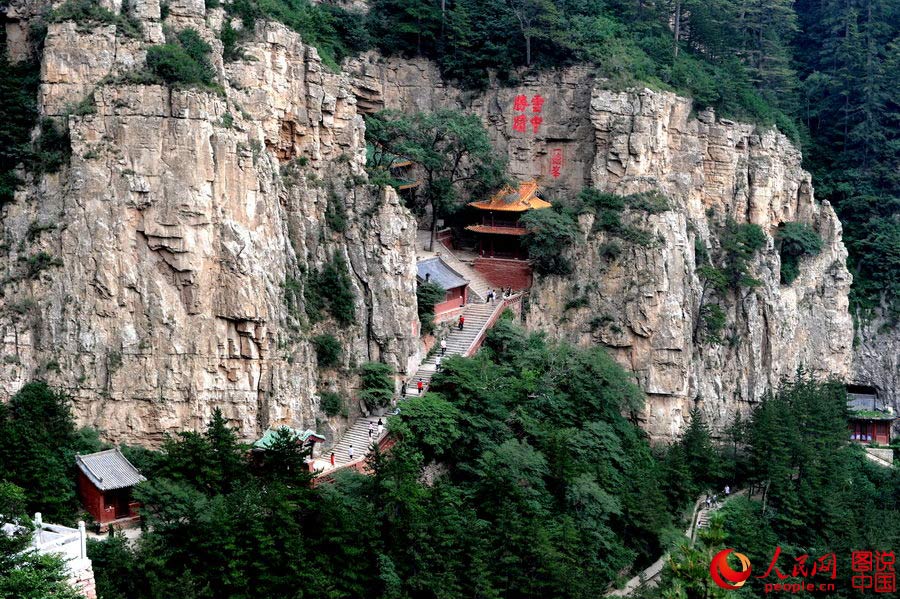
Mount Hengshan.
5. Cultural Experiences
Engage with the local culture by visiting the nearby temples such as the Huangting Taoist Temple and Jiuxian Taoist Temple, both of which showcase exquisite architecture and offer a glimpse into the spiritual life of the region. Additionally, participating in a local food tour can enrich your experience, allowing you to taste the flavors of Hunan cuisine, known for its bold and spicy dishes.
6. Accessibility and Transportation
Getting to Mount Hengshan is convenient, with high-speed trains connecting to Hengshan West Station. From there, local buses can take you to Nanyue town, the gateway to the mountain. Be sure to check bus schedules, especially if you plan to hike, to ensure you have enough time for your adventures.
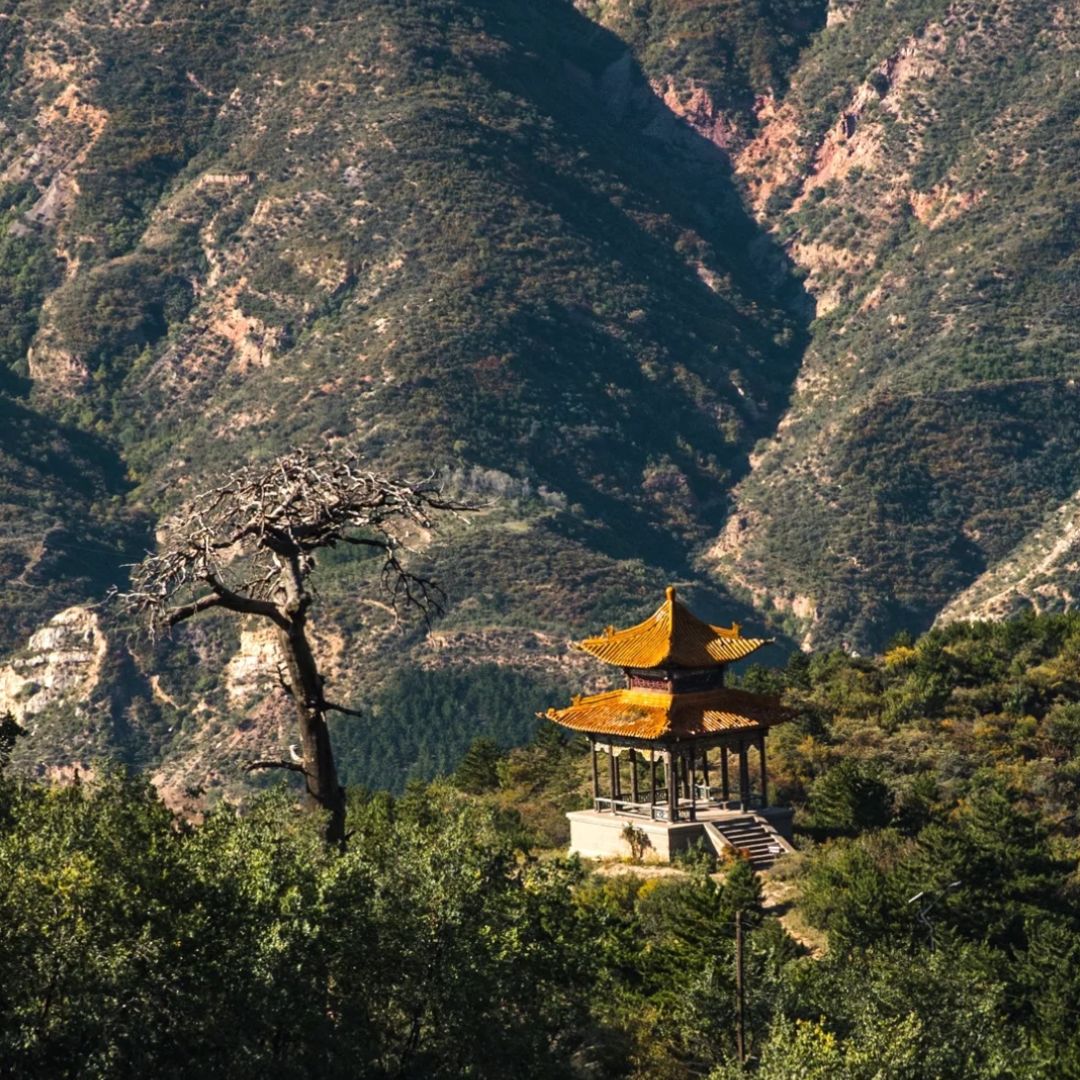
Mount Hengshan.
7. Photography Opportunities
The stunning views from various points on the mountain provide perfect backdrops for photography. Capture the sunrise or sunset from Zhurong Peak, or take candid shots of the vibrant flora and fauna along the hiking trails. The scenic vistas, especially during the fall when the leaves change color, are simply breathtaking.
Final Thoughts
Mount Hengshan is a captivating destination that offers more than just natural beauty. Its spiritual significance, combined with rich cultural experiences, makes it a must-visit for any traveler interested in Chinese history and culture. Whether you are hiking to the peak, exploring ancient temples, or simply soaking in the views, Mount Hengshan promises an unforgettable journey.
Planning Your Visit: A Practical Guide
Getting Ready for a Journey to Mount Hengshan
Visiting Mount Hengshan (恒山) is an adventure that combines breathtaking natural beauty with rich cultural history. Located in the Nanyue District of Hengyang, this mountain is one of China’s Five Great Mountains and is revered in Taoist tradition. Whether you’re a history buff, a nature lover, or an adventurous hiker, Mount Hengshan offers something for everyone. Here’s how to plan your visit.
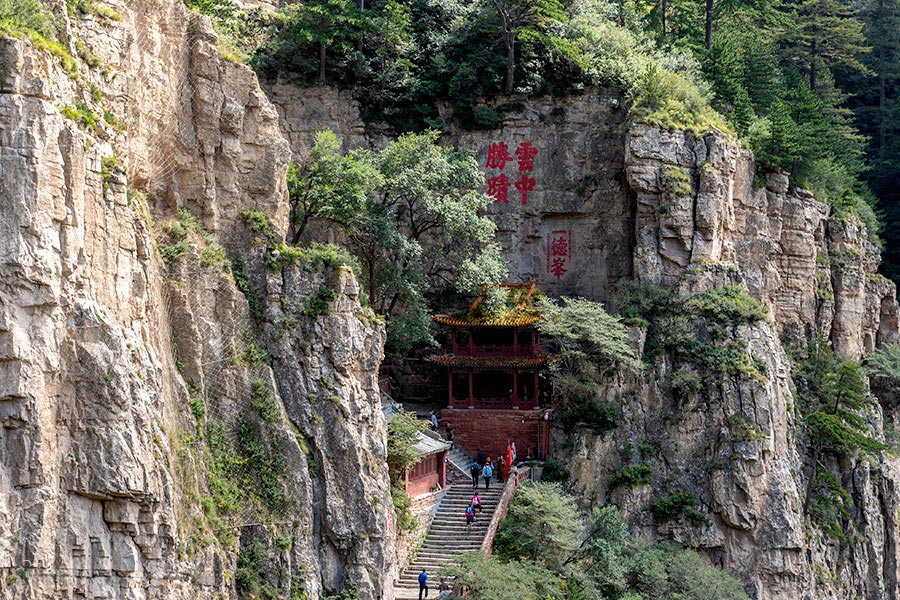
Mount Hengshan.
Transportation to Mount Hengshan
Reaching Hengyang:
– By Train: The most efficient way to reach Mount Hengshan is by taking a high-speed train to Hengshan West Station (衡山西站). This station is well-connected to major cities like Changsha and Guangzhou.
– From the Train Station: Upon exiting the station, turn right to find the bus station. Buses to Nanyue Town (南岳) operate frequently and take about 15 minutes. The fare is approximately 6 RMB.
Getting to the Base:
– Once you arrive at Nanyue Town, you can easily reach the base of Mount Hengshan. Local buses are free for tourists, and you can walk about 10 minutes to the Hengshan Memorial Arch (衡山牌坊) to catch a bus to the base. Look for bus numbers 1 or 3 for a quick ride, which takes around 5 minutes.

Mount Hengshan.
Accommodation Options
There are various accommodation choices near the mountain. Some recommended hotels include:
– Caishen Hotel (财神酒店): Conveniently located about 100 meters from Nanyue Bus Station, this hotel offers comfortable lodging for travelers.
– Local Guesthouses: For an authentic experience, consider staying at a guesthouse in Nanyue Town, where you can enjoy local hospitality.
Visiting Hours and Ticket Information
The scenic area is open daily from 8:00 AM to 4:00 PM. It’s advisable to arrive early, especially during weekends or holidays, when crowds can be significant. Entry tickets can be purchased online or at the tourist center upon arrival. Note that separate tickets are required for bus transport within the scenic area.
Exploring Mount Hengshan
Mount Hengshan offers various routes and options for exploring its majestic landscape:
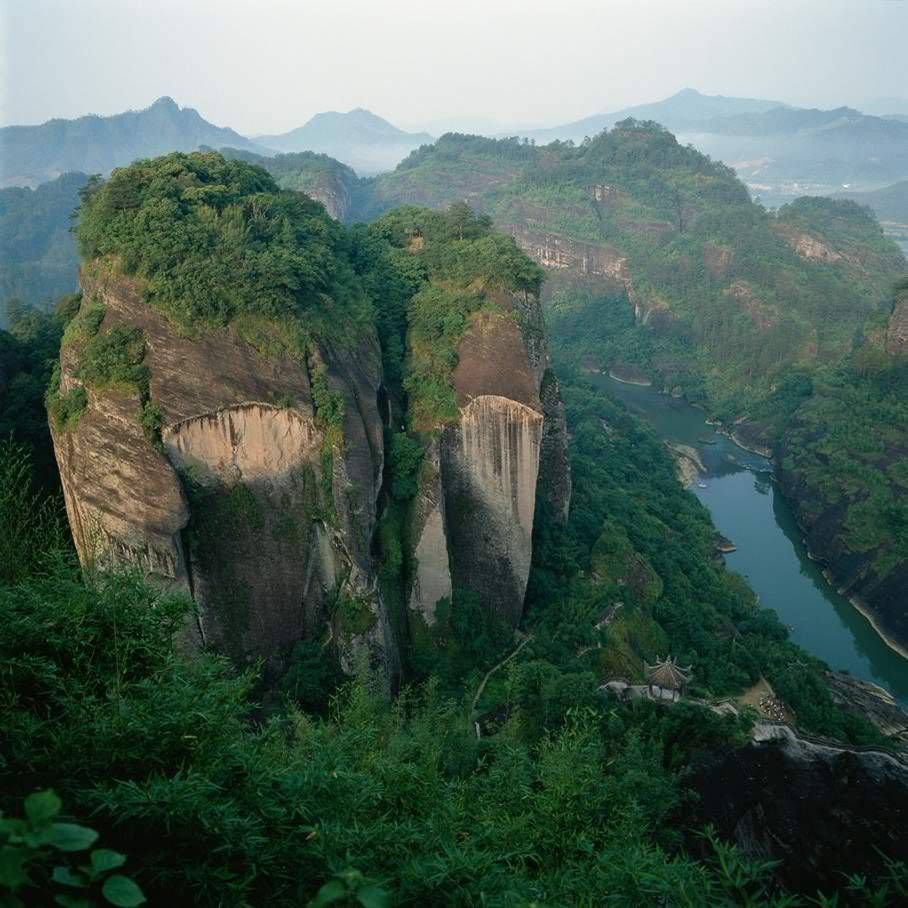
Mount Hengshan.
- Option 1 – Minimal Climbing: Take the bus from the base to the midway station and then use the cable car to reach near the summit.
- Option 2 – Moderate Climbing: Hike from the base to the midway station, then take the cable car to the summit.
- Option 3 – Scenic Hike: Take the bus to the midway station and hike the remaining distance to Zhurong Peak (祝融峰).
- Option 4 – Full Hike: For the adventurous, hike all the way from the base to Zhurong Peak.
Note: The cable car ride is about 10 minutes and costs approximately 44 RMB one way. After disembarking the cable car, prepare for another hour of uphill walking to reach Zhurong Peak.

Mount Hengshan.
Hiking Tips
- Timing is Key: Plan your hike early in the day to avoid rushing and to enjoy the views. Starting at 9 AM is advisable for a more leisurely experience.
- Water and Snacks: Carry enough water and light snacks, as there are limited facilities along the hiking paths.
- Footwear: Wear sturdy hiking shoes; the paths can be uneven and challenging, especially as you near the peak.
- Safety Precautions: Be cautious of the bus traffic on the roads, particularly when hiking back down. The area can get crowded, especially on weekends.
Cultural Considerations
Mount Hengshan is not just a natural wonder but also a significant site for Taoism. At the peak, you’ll find a temple where locals often perform rituals and offer incense. Respect the local customs and enjoy the spiritual ambiance as you explore the mountain.
Nearby Attractions
After your adventure, consider visiting:
– Grand Temple of Hengshan (南岳大庙): Located at the base, this impressive temple complex is a highlight of the region.
– Zhuling Cave (祝灵洞): A fascinating natural site nearby worth exploring.
– Huangting Taoist Temple (黄亭道观): Experience more of the area’s rich religious heritage.
Final Thoughts
Mount Hengshan is a treasure trove of history, culture, and stunning natural beauty. Whether you choose to hike, take the bus, or a combination of both, you’re sure to create unforgettable memories. Prepare well, respect the local culture, and immerse yourself in the enchanting scenery that this sacred mountain has to offer. Happy travels!
Tickets: Prices, Booking, and Tips
Visiting Mount Hengshan is a journey steeped in historical and cultural significance, and planning your visit requires a good understanding of ticketing options, prices, and booking tips. Here’s everything you need to know to navigate this majestic mountain, known for its breathtaking beauty and spiritual heritage.
Ticket Prices
When planning your trip to Mount Hengshan, be aware that there are separate tickets for entrance and transportation services within the scenic area:
- Entrance Fee: Approximately 80 RMB (about $12) for access to the scenic area.
- Bus Ticket: A fare of around 6 RMB (about $1) for buses that transport visitors from the base to various points along the mountain.
- Cable Car Ticket: If you opt for the cable car to save time and energy, expect to pay around 44 RMB (approximately $7) for a one-way ride.
Booking Options
Tickets for Mount Hengshan can be purchased in several ways:
-
On-Site Purchase: You can buy tickets directly at the Nanyue Tourist Center when you arrive. However, be prepared for potential queues, especially on weekends or holidays.
-
Online Booking: For a more convenient experience, consider booking your tickets online in advance. Various travel platforms offer ticketing services, which can help you avoid long wait times at the entrance.
-
Package Tours: Many travelers opt for guided tours, which can include transportation from nearby cities like Changsha or Guangzhou. These tours often cover entrance fees and sometimes include meals and additional sightseeing opportunities. Prices vary based on the inclusions, starting from $120 for a day trip.
Tips for Your Visit
-
Timing is Key: Mount Hengshan can get crowded, especially on weekends and public holidays. To enjoy a more peaceful experience, aim to visit during weekdays or arrive early in the morning when the tourist center opens at 8 AM.
-
Plan Your Route: Depending on your fitness level and interest, you can choose from various hiking and transportation options to reach Zhurong Peak. Options range from taking a bus and cable car to a full hike from the base.
-
Transportation Logistics: If you’re taking a high-speed train, the nearest station is Hengshan West. From there, buses to Nanyue town are available, and local travel within Nanyue is often free, making it easy to get to the base of the mountain.
-
Prepare for the Terrain: If you’re hiking, be ready for a mix of steep paths and roads shared with buses. Some hikers have reported that the experience can be less enjoyable due to heavy traffic on the pathways, so plan accordingly.
-
Accommodation: If you wish to explore the area further, consider staying in a local hotel near Nanyue town. This will allow you to fully immerse yourself in the cultural and historical aspects of Mount Hengshan without rushing your visit.
Conclusion
With its rich cultural heritage and stunning vistas, Mount Hengshan is a must-visit destination for anyone interested in Chinese history and spirituality. By understanding the ticketing options and planning your visit, you can ensure a rewarding and memorable experience amidst the majesty of this sacred mountain. Whether you choose to hike or take the easier paths, prepare for a day filled with exploration and inspiration.
How to Get There: A Complete Transportation Guide
Your Gateway to Mount Hengshan: Navigating the Journey
Mount Hengshan, known as one of China’s Five Great Mountains, is steeped in rich history and cultural significance. Reaching this stunning destination can be an adventure in itself. Below is a comprehensive guide to help you navigate your way to the majestic peaks of Nanyue.
Getting There: Key Transportation Options
1. By Train: The High-Speed Advantage
The most efficient way to reach Mount Hengshan is by taking a high-speed train to Hengshan West Station (衡山西站). This station is well-connected to major cities, including Changsha and Guangzhou. Once you arrive:
- Exit the station and turn right to locate the bus station.
- Bus Fare: Approximately 6 RMB ($0.90).
- Travel Time: About 15 minutes to Nanyue town.
2. Local Buses: Convenient Connections
From Nanyue Bus Station (南岳汽车站), you can easily access various transport options:
- Free local buses operate within Nanyue town, making it easy to move around without incurring additional costs.
- To reach the base of Hengshan, walk approximately 10 minutes to the Hengshan Memorial Arch (衡山牌坊). There, you can catch bus numbers 1 or 3, which will take you to the mountain base in just 5 minutes.
Exploring Mount Hengshan: Your Options
Once you arrive at the base, you have several options to ascend Mount Hengshan, depending on your fitness level and time constraints.
- Option 1: Minimal Climbing
-
Take a bus from the base to the midway point and then a cable car to near the summit.
-
Option 2: A Balanced Approach
-
Hike from the base to the midway point, then take the cable car to near the summit.
-
Option 3: The Scenic Route
-
Take a bus from the base to the midway point, then hike to Zhurong Peak.
-
Option 4: The Full Challenge
- Hike the entire way from the base to Zhurong Peak for a rewarding experience.
Ticketing and Timing
- Cable Car Fare: Approximately 44 RMB ($6.50) for a one-way ride.
- Operating Hours: The tourist center opens at 8 AM, and it’s advisable to start your day early to make the most of your visit.
- Bus Services: Be mindful of the bus schedules; some lines may stop operating in the late afternoon, so plan your descent accordingly.
Tips for a Smooth Journey
- Start Early: For those looking to hike the entire way, it’s crucial to start early in the day to avoid the late afternoon rush and ensure you have enough time to explore.
- Check the Weather: Mountain weather can be unpredictable, so it’s wise to check forecasts before your visit.
- Stay Hydrated and Prepared: Carry sufficient water and snacks, especially if you opt for the hiking options.
Conclusion
Mount Hengshan offers a rich tapestry of experiences, from its breathtaking views to its spiritual significance in Chinese culture. By leveraging the transportation options outlined in this guide, you can navigate your journey with ease and focus on what truly matters—immersing yourself in the beauty and history of this iconic mountain. Enjoy your adventure!
Local Cuisine and Accommodation Nearby
When exploring the breathtaking landscapes of Mount Hengshan (恒山风景名胜区), indulging in the local cuisine and finding the right accommodation can significantly enhance your travel experience. This region not only offers stunning views and spiritual sites but also a taste of authentic Chinese culture through its culinary delights and hospitable lodging options.
Local Cuisine
Hengshan is a culinary gem with a variety of local dishes that reflect the rich culture of Hunan Province. Here are a few must-try dishes and where to find them:
-
Hunan Cuisine: Renowned for its bold flavors and liberal use of chili, Hunan cuisine is a highlight in this area. Don’t miss trying Steamed Fish Head with Diced Hot Red Peppers (剁椒鱼头), which perfectly combines the freshness of fish with the heat of local peppers.
-
Stir-Fried Pork with Green Peppers (青椒炒肉): A simple yet delicious dish that exemplifies the region’s penchant for fresh ingredients.
-
Nanyue Tofu (南岳豆腐): This local specialty is made from fresh soybeans and has a unique texture and flavor. It’s best enjoyed fried or in a hot pot.
-
Street Food: While in Nanyue town, explore local street vendors for tasty snacks such as Spicy Dumplings (水饺) and Grilled Skewers (串烧), which are perfect for a quick bite before or after your hike.
For a more refined dining experience, consider visiting Nanyue Restaurant (南岳大酒店), located near the base of the mountain. This establishment specializes in Hunan cuisine and offers a comfortable atmosphere with stunning views.
Accommodation Options
After a day of hiking and exploring, you’ll want a cozy place to rest. Here are some recommended accommodations near Mount Hengshan:
-
Caishen Hotel (财神酒店): Situated conveniently close to Nanyue Bus Station, this hotel offers comfortable rooms and friendly service. It’s an excellent base for your explorations, just a short distance from the mountain’s entrance.
-
Hengshan Nanyue Hotel (衡山南岳大酒店): This hotel provides a blend of traditional Chinese decor and modern amenities. Guests appreciate the spacious rooms and on-site dining options, making it a great choice for families or those seeking a more luxurious stay.
-
Hengshan International Hotel (衡山国际酒店): For those seeking upscale accommodation, this hotel features well-appointed rooms and a range of facilities, including a fitness center and spa services. It’s located a bit further from the mountain but provides excellent access to local attractions.
-
Guesthouses: For a more intimate experience, consider staying at one of the local guesthouses in Nanyue. These often offer home-cooked meals and a chance to interact with local families, providing a deeper insight into Hunanese culture.
Conclusion
Whether sampling the spicy flavors of Hunan cuisine or relaxing in one of the welcoming accommodations, your visit to Mount Hengshan will be enriched by the local offerings. Embrace the flavors and hospitality that this captivating region has to offer, making your journey not just one of breathtaking views, but also of delightful culinary experiences.
Frequently Asked Questions
Frequently Asked Questions about Mount Hengshan
1. What is Mount Hengshan known for?
Mount Hengshan, or Nanyue, is one of China’s Five Great Mountains and holds significant cultural and religious importance, particularly in Taoism. It features stunning landscapes, ancient temples, and is renowned for its scenic hiking trails and spiritual significance.
2. How do I get to Mount Hengshan?
The most convenient way is to take a high-speed train to Hengshan West Station (衡山西站). From there, you can catch a local bus to Nanyue town. The bus ride takes about 15 minutes and costs approximately 6 RMB.
3. What are the options for hiking to the summit?
There are several routes you can take to reach Zhurong Peak, the highest point on Mount Hengshan:
– Option 1: Take a bus from the base to a midway point, then use the cable car to get closer to the summit.
– Option 2: Hike from the base to the midway point, then take the cable car.
– Option 3: Take a bus to midway and hike from there to Zhurong Peak.
– Option 4: Hike the entire distance from the base to Zhurong Peak.
4. Are there facilities available for tourists?
Yes, there are facilities including a tourist center where you can purchase tickets for entry and bus rides, as well as restrooms. Meals and accommodations are available in nearby Nanyue town, making it convenient for visitors.
5. What is the best time to visit Mount Hengshan?
The best time to visit is during spring (April to June) and autumn (September to November) when the weather is mild and the natural scenery is particularly beautiful. Summers can be hot, and winters may bring snow, affecting hiking conditions.
6. Are there any safety tips for hiking on Mount Hengshan?
When hiking, ensure you:
– Start early to allow ample time for your journey.
– Wear sturdy shoes and carry sufficient water and snacks.
– Be mindful of the weather conditions; rain can make trails slippery.
– Stay on marked paths and be cautious of fast-moving buses if you choose to walk along roadways.
7. Is it possible to visit the temples on Mount Hengshan?
Yes, several temples are located along the hiking routes and at the summit, with the Grand Temple of Hengshan at the base being particularly significant. Visitors often partake in local traditions, such as offering incense and making prayers.
8. Are there any cultural considerations to keep in mind?
When visiting Mount Hengshan, it’s important to respect local customs and traditions, especially in religious sites. Dress modestly and behave respectfully in temples, and be considerate of other visitors during ceremonies or worship activities.
Final Thoughts on Your Trip
As you prepare to conclude your adventure at Mount Hengshan, it’s essential to reflect on the rich tapestry of experiences this sacred site offers. Known as one of China’s Five Great Mountains, Hengshan is not just a natural wonder; it is a profound embodiment of Chinese spirituality and culture.
A Journey Through Time and Nature
Exploring Mount Hengshan is akin to stepping into a living history book. From the ancient temples nestled in its valleys to the well-trodden hiking paths, every corner of Hengshan whispers stories of the past. As you ascend to Zhurong Peak, take a moment to absorb the tranquil surroundings and the spiritual essence that has attracted pilgrims for centuries.
Recommendations for Your Next Visit
To ensure you make the most of your visit, consider the following:
- Start Early: Whether you choose to hike or take the bus, an early start will allow you to enjoy the serene beauty of the mountain before the crowds arrive.
- Choose Your Path: With various options for hiking and transportation, select a route that aligns with your fitness level and time constraints. Options range from leisurely bus rides to challenging climbs.
- Immerse in the Culture: Don’t miss the Grand Temple of Hengshan at the base, which is a highlight for understanding the region’s religious significance. Engage with local customs, such as offering incense, to enrich your cultural experience.
Final Thoughts
Mount Hengshan is a destination that transcends mere sightseeing; it is a pilgrimage into the heart of Chinese heritage. Whether you are captivated by the majestic landscapes, the spiritual allure of its temples, or the challenge of its trails, your journey here will undoubtedly leave an indelible mark on your soul. As you depart, carry with you the stories of the mountain, the echoes of prayers, and the breathtaking vistas that will linger in your memory long after you’ve left its sacred grounds.
May your travels continue to inspire and ignite your passion for discovery, and may you find many more such treasures across the breathtaking landscapes of China. Safe travels!